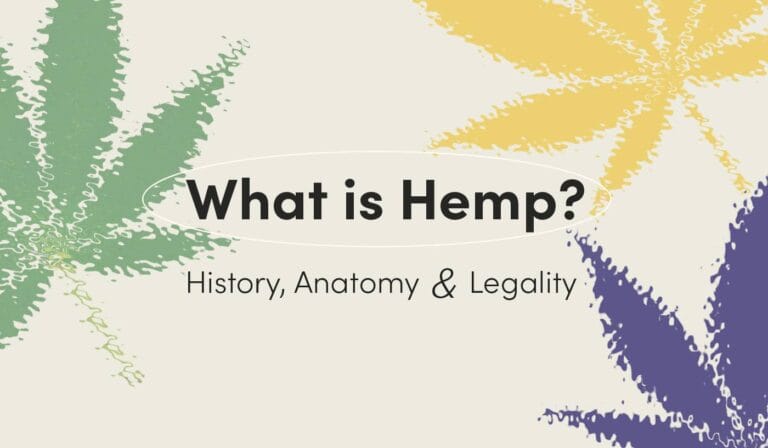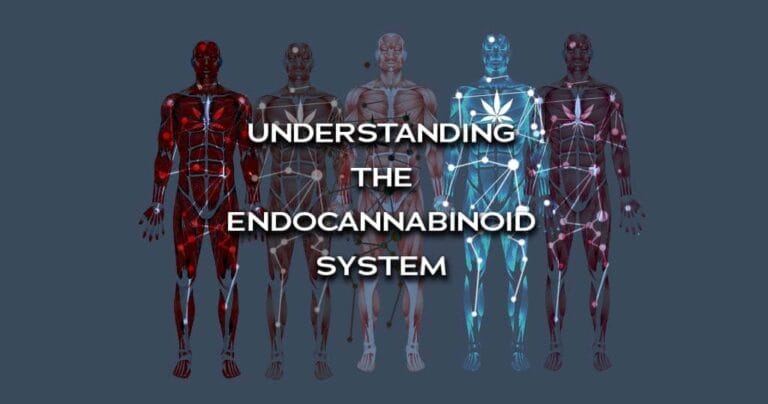Entourage Effect: How Cannabis Terpenes & Cannabinoids Work Together

What Is the Entourage Effect: How Cannabis Terpenes & Cannabinoids Work Together
Terpenes and cannabinoids"Cannabinoids" are a diverse group of chemical compounds found in the cannabis plant, Cannabis sativa. These compounds interact with the body's endocannabinoid system, influencing various physiological processes. Both endocannabinoids that... More are two of the most important compounds when it comes to cannabis"Cannabis" is a broad term that refers to a flowering plant scientifically known as Cannabis Sativa L. The term is commonly used to describe the cannabis plant and its products... More. They both have their own benefits, but they can also help each other out in certain situations.
In this post, I’ll explain how terpenes and cannabinoids work together as well as discuss what happens if you use them separately or at different times.
What Is the Entourage Effect?
The entourage effect is a term used to describe the synergistic relationship between cannabis’s various compounds. THC, CBD, and other cannabinoids all work together to produce unique effects that are greater than the sum of their parts. This phenomenon is responsible for the wide range of therapeutic benefits that cannabis can provide.
While THC is typically associated with marijuana’s psychoactive properties, CBD is known for its therapeutic benefits. However, these two cannabinoids actually work together to provide a more balanced effect. CBD counteracts some of the negative side effects of THC, such as paranoia. The entourage effect also explains why different strains of cannabis can produce different effects.
This synergistic relationship between cannabinoids is just one example of the many ways in which cannabis’s various compounds can work together to promote health and well-being.
What Are Cannabis Terpenes and Cannabinoids?
What Are Cannabis Terpenes?
Cannabis terpenes are the oils that give the plant its distinctive smell. These aromatic compounds can also be found in other plants, fruits, and herbs. Cannabis terpenes are thought to contribute to the plant’s therapeutic effects and may also play a role in how different strains of cannabis affect the body.
There are around 200 terpenes in cannabis, but only a few of them have been studied in-depth so far. The most well-liked cannabis terpenes include pinene, limonene, myrcene, linalool, and beta-caryophyllene. Each of these terpenes has its own distinct aroma, taste, and medicinal effect.
What Are Cannabinoids?
Cannabinoids are a class of diverse compounds that act on cannabinoid receptors"Cannabinoid Receptors" are specialized receptors found in the human body, forming part of the endocannabinoid system. These receptors interact with cannabinoids, both endocannabinoids produced naturally by the body and phytocannabinoids... More in cells that alter neurotransmitter release in the brain and body. Cannabinoids are produced naturally in the human body, most notably anandamide. It helps to regulate our bodies when it is working properly. Sometimes our bodies may need more assistance and this is where phytocannabinoids come into help.
What Are Phytocannabinoids?
Phytocannabinoids are a type of cannabinoid that is found in plants. There are more than 100 different phytocannabinoids, and they are found in a wide variety of different plants. Phytocannabinoids interact with the body’s endocannabinoid system, which is responsible for regulating various functions in the body.
Additionally, there may be other receptors that are affected by phytocannabinoids that are yet to be researched. Some of the potential benefits of phytocannabinoids include reducing inflammation, pain relief, and anxiety reduction. Phytocannabinoids have many benefits and can be consumed separately or together to get different effects.
What Are Minor Cannabinoids?
The two primary cannabinoids in cannabis are THC and CBD. However, there are over 100 different other minor cannabinoids found in the cannabis plant. Minor cannabinoids play an essential role in the plant’s overall effects, even though they are found in much smaller amounts. Similar to terpenes, these minor cannabinoids have unique effects and medical benefits. Some of the more well-known minor cannabinoids include CBN, CBG, CBC, and THCV.
Benefits of Minor Cannabinoids
Studies into the benefits of minor cannabinoids are limited compared to CBD, but what studies have been done show promising results. For example, CBC has been shown to reduce the psychoactive effects of THC. An interesting note for future consideration is that some minor cannabinoids will modulate the effects of others. Further research is needed to fully understand the potential therapeutic benefits of minor cannabinoids.
What Are Flavonoids?
Flavonoids are a type of phytonutrient, which are natural compounds that are found in plants. There are over 6,000 different flavonoids, and they can be found in fruits, vegetables, nuts, seeds, legumes, tea, red wine, chocolate, and more! However, some flavonoids are only found in cannabis and hemp. These flavonoids are referred to as cannflavins.
Flavonoids can be broken up into subgroups each containing a vast amount in each however all of them have a similar molecular skeleton. These subgroups are flavones, flavonols, flavanones, flavanonols, flavanols or catechins, anthocyanins, and chalcones.
What Are the Health Benefits of Flavonoids?
Studies have shown that flavonoids can help to protect the body against damage from free radicals, reduce inflammation, and boost immunity. In regards to cannflavins, they have shown signs of neuroprotective properties as well as other benefits.
In plants, flavonoids are critical cell messengers responsible for plant development and communication. The other more vibrant function they have is helping to create a vivid depth of colors in plants.
How Do Cannabis Terpenes and Cannabinoids Work Together?
Cannabis terpenes are the molecules responsible for the plant’s distinct smell, and they also play a role in the entourage effect. When cannabinoids and terpenes work together, they can offer a more well-rounded experience than either one could provide on its own.
Cannabinoids, terpenes, and flavonoids are the active compounds in cannabis that interact with our body’s endocannabinoid system. They bind to receptors throughout our nervous system and influence everything from pain perception to mood. Terpenes, on the other hand, are what give cannabis its distinctive smell and flavor.
While cannabinoids like THC and CBD get most of the attention, terpenes shouldn’t be underestimated. As we stated above, these molecules can enhance or modulate the effects of cannabinoids, which is why they’re often referred to as the “entourage effect”.
What Is the Best Ratio of THC to CBD?
There is a lot of debate in the hemp and cannabis community about what the ideal ratio of THC to CBD is. Some people believe that a higher THC-to-CBD ratio is better for relief, while others believe that a lower THC-to-CBD ratio is best for relaxing. Cannabis affects everyone differently, so there is no one optimal dosage or ratio that works for all people.
The ideal THC to CBD ratio varies from person to person, depending on their goals for using cannabinoids, terpenes, and flavonoids. Ultimately, it’s up to the individual to experiment with different ratios and see what works best for them.
Entourage Effect’s Role on the Brain
As more receptors are activated through the increased diversity in plant compounds the role of the brain is a more unique experience. Due to the nature of the plant kingdom, the nuance of expression leading to our human experience is complex even at its simplest. When presented with minor cannabinoids, flavonoids, and other small compounds the complexity increases even more. As more experiences occur, user reports along with cutting-edge science will help determine the exact role these compounds play in our brains.
What Are the Benefits of the Entourage Effect?
The entourage effect is the term that was introduced to reference “the sum of all the parts leads to the magic or power of cannabis and hemp”.
1. The entourage effect is thought to produce a more effective result than any one compound alone.
The entourage effect really started to gain significance when users reported the effects of cannabis compounds are more beneficial when taken together as a whole plant extract. Early research suggests that the entourage effect may be responsible for some of cannabis’ therapeutic benefits. It can create effective relief by delivering a variety of more readily available compounds for the endocannabinoid system to use.
2. The entourage effect is believed to be responsible for the various benefits of cannabis.
The entourage effect is partly responsible for the various benefits of cannabis. CBD products are becoming more popular due to the engagement of the entourage effect. The effect provides insight into how different compounds work together to produce benefits.
3. The entourage effect may also explain why some people experience different effects from different strains of cannabis.
Ultimately, the entourage effect is the idea that different strains of cannabis have different effects. The testimony of consumers is consistent with the theory that small differences in cannabinoid and terpene mixes create different user experiences. The entourage effect suggests that the interaction of different cannabis compounds can produce new and unique effects. The anecdotal evidence supporting the reality of the entourage effect may not be conclusive, but it is persuasive enough to motivate researchers to continue their quest for the truth. Currently, this may help to explain why some people experience different effects from different strains of cannabis.
4. The entourage effect is still being studied and more research is needed to fully understand its potential.
Although the entourage effect has been studied for many years, there is still a lot unknown about how it works and what potential benefits it could have. More research is needed to fully understand the entourage effect and how it can be used to improve health and well-being.
The main reason for skepticism is the lack of controlled, double-blind laboratory studies to verify the reality of the entourage effect. The federal government’s classification of recreational cannabis as a Schedule I substance has hindered research, as has the lack of funding for such studies. However, a number of scientists who study the healing properties of cannabis say they have seen firsthand evidence of the entourage effect and believe it exists.
Some scientists believe that if it can be proven to exist, it could have major implications for the future of medical cannabis. For example, patients might need to use a lower cannabis dosage overall if all the different compounds were working together synergistically.
Why Is the Entourage Effect An Important Idea?
The entourage effect is an important factor in cannabis efficacy. If compounds can work better together, then taking less overall may still allow for greater results along with saving some costs at the same time. (Who doesn’t want more for less?) This synergy is an important reason why full-spectrum CBD products and medical marijuana can be so effective for some patients.
What Should I Look for When Selecting CBD Cannabis Products for Better Sleep?
Cannabinol (CBN)
Cannabinol (CBN)"Cannabinol (CBN)" is a cannabinoid found in cannabis that results from the degradation of THC (tetrahydrocannabinol) over time. While present in relatively low concentrations in fresh cannabis, CBN levels can... More is a cannabinoid that has been shown to have sleep-promoting properties. CBD is also known to interact with receptors, which regulate many different aspects of our brains and bodies. Therefore, CBD may also have potential benefits for sleep. Many users recommend CBN along with CBD to increase the sedative effect of CBD products.
Myrcene Terpene
Myrcene is an organic compound that gives mangos their distinctive scents. They play a role in the entourage effect altering the way CBD binds with receptors producing a complementary effect. Myrcene is one of the 10 most commonly found terpenes in hemp and has a relaxing effect on the mind and body, which may improve sleep.
Terpenes can also improve sleep by acting as an anti-inflammatory agent. Beta-Caryophyllene is one of the only known terpenes that binds to cannabinoid receptors and may provide some of the benefits associated with CBD’s entourage effect.
In Conclusion: The Entourage Effect Result
The entourage effect is a phenomenon that occurs when cannabis terpenes and cannabinoids work together. This interaction between compounds results in a more therapeutic effect than any one of them could produce on its own.
The entourage effect is the reason why whole-plant cannabis is more effective than isolated cannabinoids. With an understanding of the entourage effect, cannabis users can choose strains and products that are more likely to produce the desired effect.
Frequently Asked Questions:
Resources:
- DeLong GT, Wolf CE, Poklis A, Lichtman AH. Pharmacological Evaluation of the Natural Constituent of Cannabis Sativa, Cannabichromene and its Modulation by Δ9-Tetrahydrocannabinol. Drug Alcohol Depend. 2010;112(1-2):126-133. doi:10.1016/j.drugalcdep.2010.05.019
- Panche AN, Diwan AD, Chandra SR. Flavonoids: an overview. J Nutr Sci. 2016 Dec 29;5:e47. doi: 10.1017/jns.2016.41. PMID: 28620474; PMCID: PMC5465813.
- Rea KA, Casaretto JA, Al-Abdul-Wahid MS, et al. Biosynthesis of cannflavins A and B from Cannabis sativa L. Phytochemistry. 2019;164:162-171. doi:10.1016/j.phytochem.2019.05.009
- Morales P, Hurst DP, Reggio PH. Molecular Targets of the Phytocannabinoids: A Complex Picture. Prog Chem Org Nat Prod. 2017;103:103-131. doi:10.1007/978-3-319-45541-9_4






